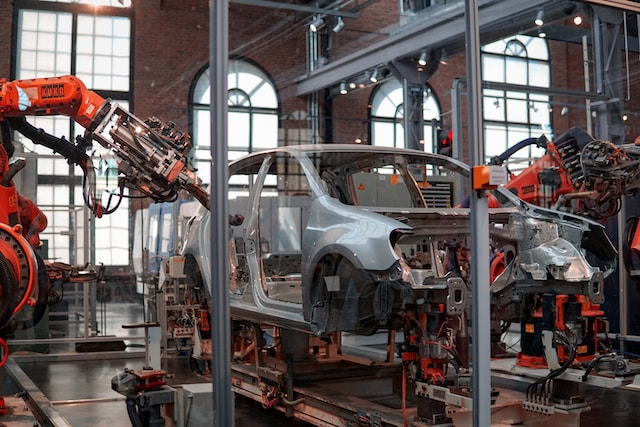It’s hard to ignore the intense amount of emotion contained within debates regarding automation terminology. From Silicon Valley in California to Bangalore and Tokyo, conversations on “artificial intelligence” (AI), “machine learning”, and “automation” have been increasing among industry influencers over the years. As these topics become more mainstream amongst tech media outlets, there has also been a rise in backlash from areas such as labor unions which is often attributed to misunderstandings about how technology impacts their members’ current employment prospects.
In this blog post, we will be decoding these backlashes by taking an in-depth look at industry differences in how each concept is defined, and problems related to automation terminology confusion that lurk beneath the surface like potential misclassification errors or customer misunderstanding due to lack of adequate disclosure. Additionally, we’ll cover actions being taken by various organizations seeking to improve automation specification so everyone can better understand it—from those implementing technologies to executives driving large organizational transformations downward through entire consumer base levels outwardly.
Automation in Gear Systems
In the world of automation, gears are an essential component. They allow for the transmission of power and motion between two or more shafts. As technology has advanced, there have been significant improvements made to gear systems, one of which is zero backlash in gear system, which is designed to eliminate any play or gaps between the gears, resulting in a more precise and efficient transmission of power and motion.
This is achieved through the use of specialized gear teeth profiles and advanced manufacturing techniques. This type of gear system is particularly useful in automation as it allows for smoother operation and greater accuracy, making it ideal for applications that require precision and control.
Exploring Different Industries
The world is constantly evolving, and technology is at the forefront of these changes. Automation has become increasingly prevalent in various industries, greatly improving efficiency and productivity. Each industry has unique automation needs depending on its processes and goals.
For instance, the manufacturing industry can use automation to streamline production and reduce errors, while the transportation industry can use it to optimize routes and reduce fuel consumption. Exploring different industries and their automation needs is not only interesting but also crucial in staying up-to-date with the latest advancements in technology. By understanding these needs, we can work towards creating innovative solutions that can help businesses thrive in the future.
Identifying Reasons Behind Automation Backlash
The rise of automation has undoubtedly revolutionized the way industries operate, from streamlining manufacturing processes to fast-tracking data analysis. However, certain industries have experienced a significant pushback against automation technology. One possible reason behind this is the fear of job loss, as many workers worry that their skills will become obsolete. Additionally, the implementation of automation technology requires significant investment and may not always yield immediate returns.
This can be a major deterrent for businesses, particularly smaller ones operating in industries with a high degree of labor-intensive work. Ultimately, identifying the reasons behind automation backlash in certain industries is crucial in finding ways to address these concerns and move towards a more automated future that benefits both businesses and workers alike.
Examining the Cost-Benefit Analysis
Automation technology has swept across many industries, promising greater productivity, efficiency, and reduced costs. However, these benefits come at a price. Companies must weigh the pros and cons against their bottom line and workforce. Automation technology can be a significant investment with additional costs for implementation and ongoing maintenance. While these costs must be factored into the decision-making, the potential benefits are numerous.
With automation technology, businesses may experience superior product consistency, quick returns on investment, less downtime, heightened accuracy, and increased output. The question that every company must answer is whether the potential benefits of automation technology outweigh the associated costs. Given such a complex and critical decision, examining the cost-benefit analysis becomes crucial.
Finding Solutions to Address Automation Concerns
As automation continues to advance across various sectors, concerns about its impact on employment and the economy are becoming increasingly pronounced. But rather than fearing the technology, many businesses and policymakers are exploring ways to harness its potential while mitigating negative consequences.
Some solutions being explored include implementing systems of worker retraining and upskilling, creating policies to incentivize automation that prioritizes job creation, and fostering collaboration between the private and public sectors to ensure that automation is integrated in a way that maximizes its benefits for all. As we continue to navigate the challenges and opportunities presented by automation, it’s clear that finding comprehensive solutions will require collaboration, creativity, and a willingness to think outside the box.
Developing Strategies to Improve Industry Acceptance
As industries increasingly rely on automation technology, there is a growing need for a universally accepted terminology to describe it. Adopting standard terms will help ensure that all professionals in the field are on the same page, preventing communication errors and ensuring that automation systems can work together effectively.
However, creating and widely disseminating such terminology is no easy task. It will require a concerted effort from industry leaders, experts, and stakeholders to come together and develop a comprehensive set of terms that are both accurate and easily understandable. Only then can automation systems reach their full potential and continue to drive economic growth and innovation.
In conclusion, the automation revolution is an ongoing process that will continue to shape the future of many industries. However, while automation promises increased productivity, improved safety, and consistent results in terms of product quality, it may also present some difficulties for businesses to overcome. For this reason, it is important to understand the basics of automation terminology and its associated technologies.
Additionally, by exploring different automated projects already underway and understanding the various reasons why there may be a backlash to new implementations, businesses can assess the cost-benefit analysis of their investments and strive to find solutions that address any concerns entertained by those in their respective industry. Finally, businesses must collaborate with other organizations to develop strategies that improve industry acceptance of automation technology going forward. To embrace this change successfully, we must all stay informed on trends and technologies that contribute to increasing automation acceptability.







